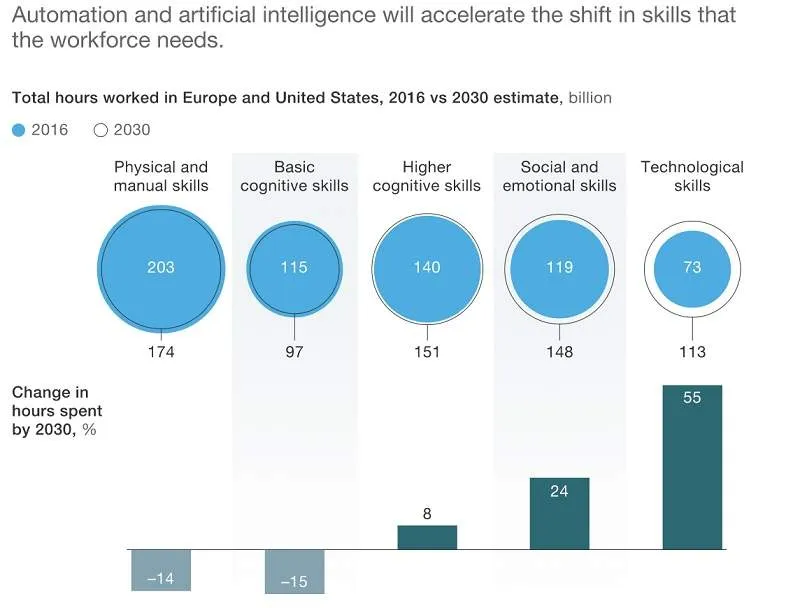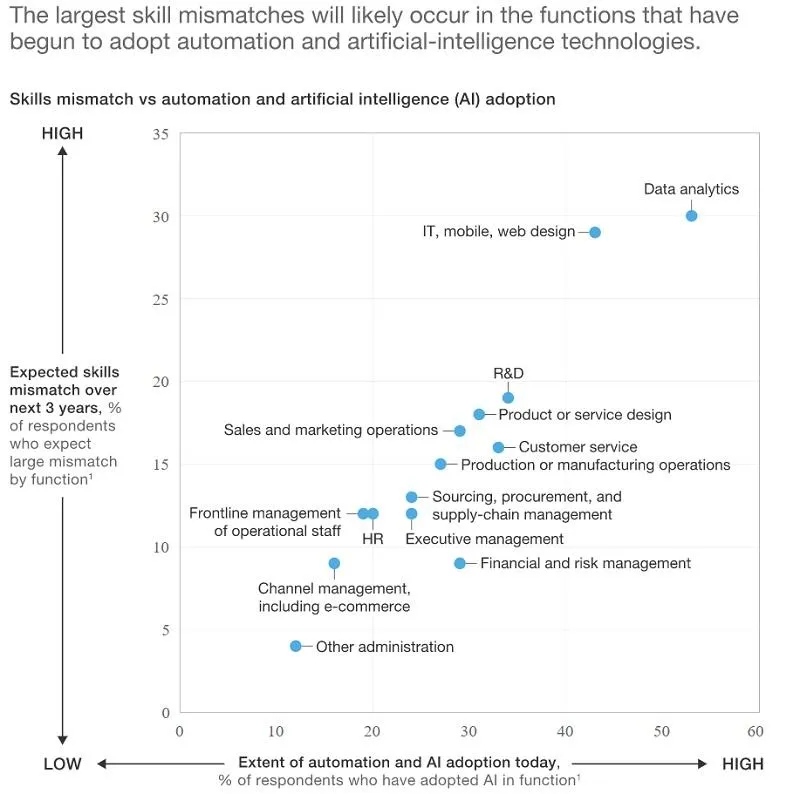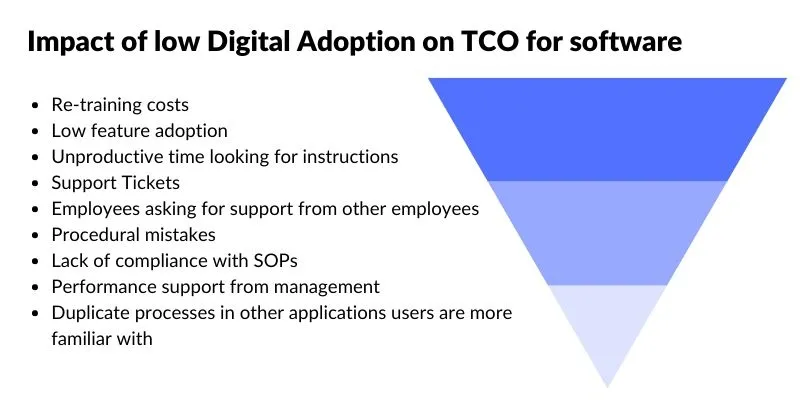The impact of digital adoption on transformation initiatives

Table of Contents
What Is Digital Adoption?
Digital adoption is the process through which an individual acquires the ability to fully master new technology and successfully carry out digital processes for specific purposes.
Digital adoption is a change and learning mechanism that allows individuals to a) understand the potential of digital resources, b) accept and utilize such resources to achieve their goals, and c) leverage each technology to the fullest to drive innovation and optimize processes.
To achieve true digital adoption, people need to understand both the functionality and benefits of digital processes, be fully onboarded on the most advanced features of software applications, and understand the role of digital processes and the reasons behind the change.
The most important, and indeed the truly unique, contribution of management in the 20th century was the fifty-fold increase in the productivity of the manual worker in manufacturing. The most important contribution management needs to make in the 21st century is to increase the productivity of knowledge work and knowledge workers.” – Peter Drucker
Digital Adoption and Change Processes
Change processes that revolve around digital transformation go well beyond the simple implementation of new technology.
Primarily, digital disruption is about people and their human experience. On the one hand, digital transformation focuses on customers and their experiences along the customer journey. On the other, transformation is about creating a meaningful employee experience as the quality of service you offer to your customers is directly linked to the experience you offer to your employees.

Change management largely focuses on a change in mentality and approach, whereas digital adoption requires organizations to restructure their internal processes to support successful disruption.
Introducing new technology and processes is completely useless if employees don’t tap into the full range of features to optimize operations and create frictionless transactions for customers.
Digital transformation requires effective change programs that focus on communication and digital adoption processes that focus on improving employees’ workflow.
For companies that deal with both employee-facing and customer-facing technology and digital processes, digital adoption becomes even more important to optimize both internal productivity and customer experience.
But digital adoption efforts pay off, as proven by the IDG’s State of Digital Business Transformation study in which it’s mentioned that businesses that adopt a digital-first strategy increase their revenue on average by 34%.
Digital Adoption in Enterprise Companies
To meet the requirements of customers in the digital era, companies need to radically change mentality, processes, and strategy while implementing modern technology that supports the new business goals.
Besides dealing with internal resistance to change, companies also need to face the problem of having a digital workforce whose skillset is perfectly aligned with the new direction.
With every disruptive cycle and the introduction of new technology, companies need to introduce measures to cope with the skill shifts required to carry out new tasks and interact with new interfaces (from machinery and tools to software and automation) and implement an effective knowledge transfer strategy.
Nowadays, there’s a much higher demand for cognitive skills and organizations need to act quickly to make sure that technology actually enables and facilitates transformation instead of becoming an obstacle.
And yet, as of today, employees are still spending an average of 22 minutes a day trying to figure out how to accomplish tasks while working with new applications, as demonstrated by a study published on Harvard Business Review.

Now is the time for companies to prioritize activities that a) quickly onboard new employees, b) upskill existing employees, and c) tackle the challenges linked to data processing, customer intimacy, speed, and customer journey optimization.
Automation, ML, and AI require a new ecosystem of integrated applications that share and exchange information to provide and make sense of data in real time.
The benefits of such platforms are endless, but, as emphasized by McKinsey, companies have to ensure that the interaction between humans and machines becomes as natural as possible to drive digital adoption and boost a digital skill set.

Advanced technological skills will become even more important over the next 10 years.
According to the same research conducted by McKinsey, by 2030, time spent interacting with advanced technology will increase by 50% in the United States and 41% in Europe.
Demand for digital skills is the fastest growing category (among a set of 25 skills that were taken into account in the research). Such a demand will increase by 69% in the US and 65% in Europe over the next 10 years.
Digital Adoption and Shift in Mindset
The verdict is unfortunately harsh: It’s a case of adapt or die. Either companies successfully undergo transformation or they’ll perish.
A recent IDC survey points out that 73% of companies believe they will either be out of business or marginalized if they don’t transform. Over two-thirds of them expect a digitally enabled competitor to gain a competitive advantage within the next five years.
Over 20% said it is highly likely to happen in the next 12 months.
Right now, over a third of the skills required for a specific position have nothing to do with the core skill set which is usually connected to that specific occupation, as shown in the ‘Future of Jobs’ report published by the World Economic Forum.

That’s why, according to IDG’s Digital Business Survey, 89% of businesses will prioritize digital adoption as they claim to have adopted a digital-first strategy.

Unfortunately, though, 66% of businesses still feel like they’re missing the mark when it comes to solutions that support the strategy.
So, the biggest challenges connected to digital adoption? Resistance to change, compliance, continuous training, and legacy culture.
A mismatch of culture and skills are always cited as the first points of failure when organizations try to implement new digital frameworks.
How Companies Are Evolving to Drive Digital Adoption
The key to successful digital adoption is continuous training.
Winning companies are those that have successfully implemented a lifelong learning culture and the right technology that promotes continuous learning and development.
Unrelated fields are now becoming unitary interdisciplinary categories and companies require a workforce that can quickly adapt, show flexibility, and execute new strategies.
Across nearly all industries, the impact of technological and other changes is shortening the shelf-life of employees’ existing skill sets.”
-The World Economic Forum
A modern talent management approach becomes the key driver of successful disruption and companies that invest in developing their workforce exhibit the highest growth.
Customer needs and expectations will continue to change rapidly and the nature of work will continue to evolve to deal with such moving goalposts.
As mentioned in Pluralsight’s report on the fourth industrial revolution, staff training and employee development plans will become the center of the business strategy of major corporations by 2025.
To remain relevant in the digital revolution, businesses need to invest in digital adoption to optimize strategy and execution.
The Role of Digital Adoption Platforms
The benefits an organization plans to realize from a new software will not materialize until users have embraced and are productive with the new applications and processes.” -Gartner
Change management programs that hinge on clear communication, benefits, and cultural changes need to be coupled with a digital adoption strategy.
Most change processes fail because they’re uncoupled from digital adoption plans.
One thing is fighting the resistance to change. But enabling people to successfully master a new digital framework while continuously learning is entirely different.
Because we are now dealing with cloud solutions and infrastructure-as-a-service characterized by frequent updates and changes, organizations need to implement an agile-solution to provide continuous performance support that compensates for the need for training and retraining programs.
Traditional training for software and digital processes can’t keep up with the speed at which technology evolves. And neither can training materials that face obsolescence right from the date of publication.
The Ebbinghaus Forgetting Curve shows that 90% of what people absorb during training is forgotten in less than a month. This is why employees require constant performance support instead of occasional training sessions as constant performance support ensures that every interaction each employee has with a new technology turns into a microlearning experience.
And that’s exactly what a Digital Adoption Platform (DAP) like Userlane does: It provides every application with a guidance layer that steers users and operators in real time while they accomplish digital tasks.
Support is delivered directly on-screen while people interact with software applications in a self-serve consumable way.

Userlane’s Digital Adoption Platform: Interactive on-screen guidance for any software application
Userlane also adds a Virtual Assistant to every application that provides electronic performance support either proactively (to drive engagement and push users to work with advanced features) or on-demand (when users are not sure how to achieve their goal).
A digital adoption platform basically provides in-app user onboarding and training with step-by-step interactive performance support.
The Real Drivers in Digital Transformation
IDC’s ‘Designing Tomorrow’ white paper shows that the main drivers of digital transformation are people, knowledge, and culture.
Investing in people and their digital know-how is the most essential element to guarantee scalability and sustainability.
Before investing in digital transformation projects, companies agree that they need to have a clear digital adoption strategy in place to make sure that their workforce will comply with the new Standard Operating Procedures (SOPs) that accompany the transition.
As shown in a recent case study we conducted, employees only use approximately 40% of the features of new software applications and this dramatically reduces the ROI derived from the implementation of new software.
Companies are starting to leverage global in-house centers (GICs) and are also appointing digital adoption officers who have the task of ensuring that employees are continuously being trained on new technologies to increase the overall success and ROI of digital initiatives while optimizing the Total Cost of Ownership (TCO).

A digital adoption platform becomes an essential instrument in the form of modern support that guarantees productivity and a great employee experience with interactive guidance and analytics.
Companies tend to face higher resistance when it comes to employees who aren’t digital natives. Such employees might doubt their ability to master an entirely new digital framework.
People tend to find comfort in what they’re already familiar with and this holds true for both your customers who aren’t willing to learn new ways to interact with your business and your employees who tend to stick to existing workflows.
Digital adoption is the process of overcoming such a steep learning curve, breaking through barriers and obstacles connected to push-back, and allowing anybody to be proficient with any new digital process without strenuous training.
The Impact of Digital Adoption
As mentioned, digital transformation and change processes that are disjointed from a digital adoption strategy fail or yield a much lower return on investment.
Nowadays, people are becoming increasingly familiar with digital assistants in their personal lives. At work, we now witness the same phenomenon thanks to the introduction of Digital Adoption Platforms.
This new software category provides automated onboarding, training, and support that helps employees and customers deal with new digital processes successfully without training, tutorials, or documentation.
For companies, this translates into a workforce of digital natives who can, for instance, immediately master a new CRM solution, work with new processes in an HCM platform, comply with new requirements in their intranet, and immediately put in place the right procedures driven by data mining applications while working with a new ERP system without hesitation and frustration.
Digital adoption has become the basic requirement of transformation and change processes.
Learn more about the role of a Digital Adoption Platform by talking to us. Our solution architects will show you how easy it is to get started with your digital adoption strategy.

